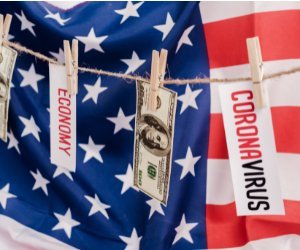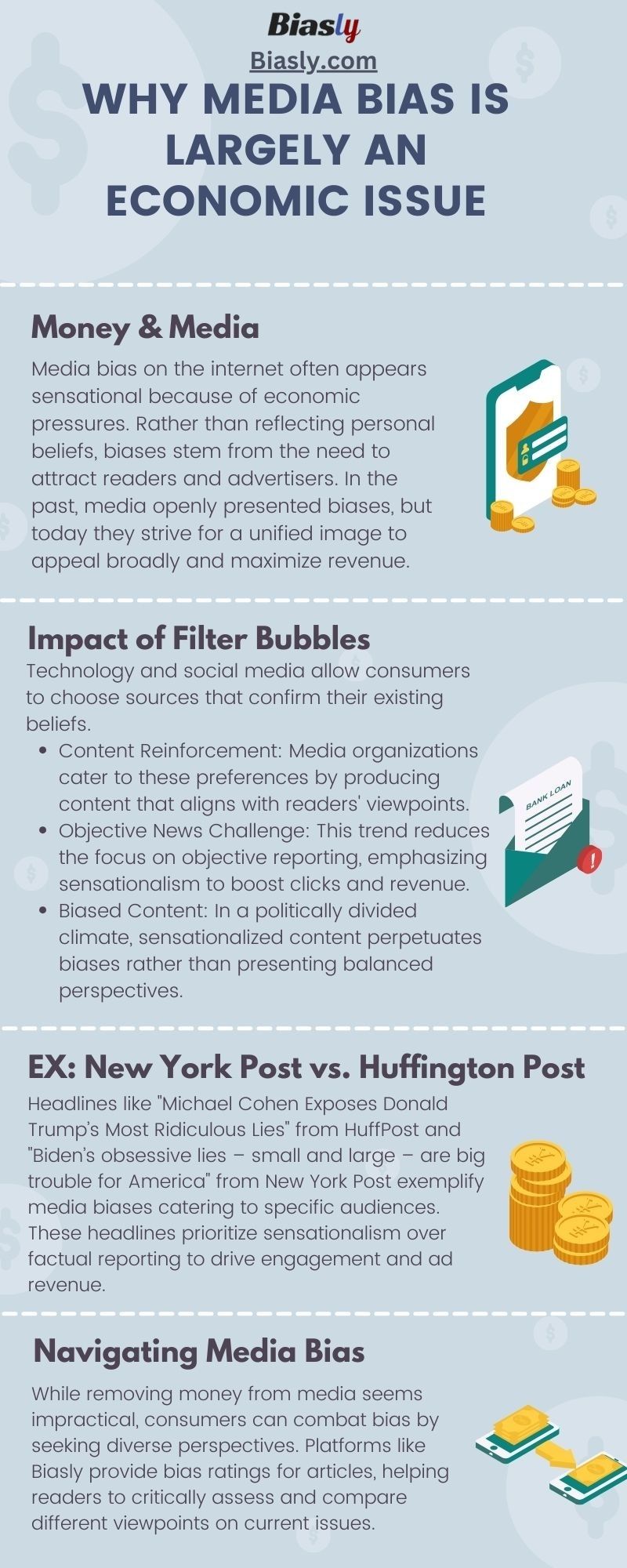
Why do most news articles on the internet seem to be sensational? Are media corporate owners and journalists just more biased than ever? What if I told you that simple economics is largely to blame for media bias? Let’s look at how media bias follows a money trail and what you can do to avoid it.
Money & Media
Wharton marketing professor and researcher Pinar Yildirim argued that the uptick in biases in the media does not stem from the personal beliefs of a corporate media agency or journalist, but rather from the economics of trying to attract and maintain both readers and advertisers.
In the past, reporters and media organizations were more open about their biases. Media corporations would present their biases openly, and reporters would bring their own ideas to the job. Over time, media organizations have attempted to present a more unified image and set of views in order to appeal to a larger audience and generate more revenue. Programmatic advertising was (and still is) the biggest revenue generator for media companies on television, and there was once a golden age of news.
As the internet and social media have grown, media organizations have increasingly returned to their public biases. In order to compete for traffic, views, and subscriptions, media organizations put out content every day. Online media content relies on traffic through clicks and views to generate revenue from paid advertisements on their websites. This reliance on traffic means the success of these online publications depends on getting users interested enough to click on the article, not just read the headline.
Media organizations all over the country, especially those focused on website content, have adopted a sensationalism-type strategy to appeal to their target consumers and boost revenue through advertisements.
How Filter Bubbles Contribute to Media Bias
The proliferation of technology and platforms like social media has given rise to a new breed of media consumers: those who hand-pick where and how they receive their information. This increase in choices has caused many to filter out media opinions and perspectives that do not fit in with their own, creating a filter bubble.
Though it is commonly believed that people prefer unbiased news, the reality is that individuals often prefer information that is more agreeable to their own views and perspectives. In today’s divided political climate, consumers are typically looking for content that reinforces their own political beliefs, resulting in a need for sensationalism. With the growing divide between political factions and the need to generate clicks and leads, media organizations are increasingly focused on creating content that fits their consumers’ needs rather than providing factual information.
Whenever consumers allow a filter bubble on themselves with sensationalism, the content becomes biased. In order to create maximum interest to get consumers to click on the article, journalists online must now focus on appeasing those within their filter bubble because of their higher likelihood of becoming leads for advertisers.
Where in the past, media corporations found success by suiting their programming to accommodate a wider audience for advertising revenue, the same companies now benefit from segmenting and personalizing their content for their target audience.
New York Post vs. Huffington Post: A Media Bias Example
Here is an example of media biases between the left and right sides of the aisle:
- “Michael Cohen Exposes Donald Trump’s Most Ridiculous Lies”– written by the HuffPost
- “Biden’s obsessive lies – small and large – are big trouble for America“- written by the New York Post
Each post has the goal of appealing to the target’s filter bubble. The headlines of these posts attract and create sensationalism to drive clicks rather than focus on informative content.
The Huffington Post, a subsidiary of BuzzFeed, has been operational since 2015. BuzzFeed is widely known for its left-leaning content that appeals to younger audiences. On the other hand, The New York Post is owned by Rupert Murdoch’s News Corporation and shares the same conservative ideals as Fox News. Advertisers who wish to have their products or services featured on the Huffington Post and The New York Post prioritize traffic that leads to engagement, views, and sales. Media organizations that wish to appease these advertisers must focus on clickable and shareable content rather than impartial and unbiased information.
So, the Solution is to Remove Money from the Industry?
Unfortunately, asking corporate media giants to remove money from the process is like asking government officials to take money out of politics. Fortunately, you can bias-check yourself when reading articles and watching videos. Biasly, an organization that provides bias ratings for articles across the web, provides a side-by-side perspective on trending topics every day. Be aware of the content you’re consuming, and always be willing to view alternative perspectives. There are services online that will provide you with multiple perspectives on a single topic. Get three perspectives on every major political issue, from leftist, moderate, and right-leaning articles. Stay ahead of the media bias money game. Check biases on our site or install the Chrome extension and get bias rankings straight from your browser.























